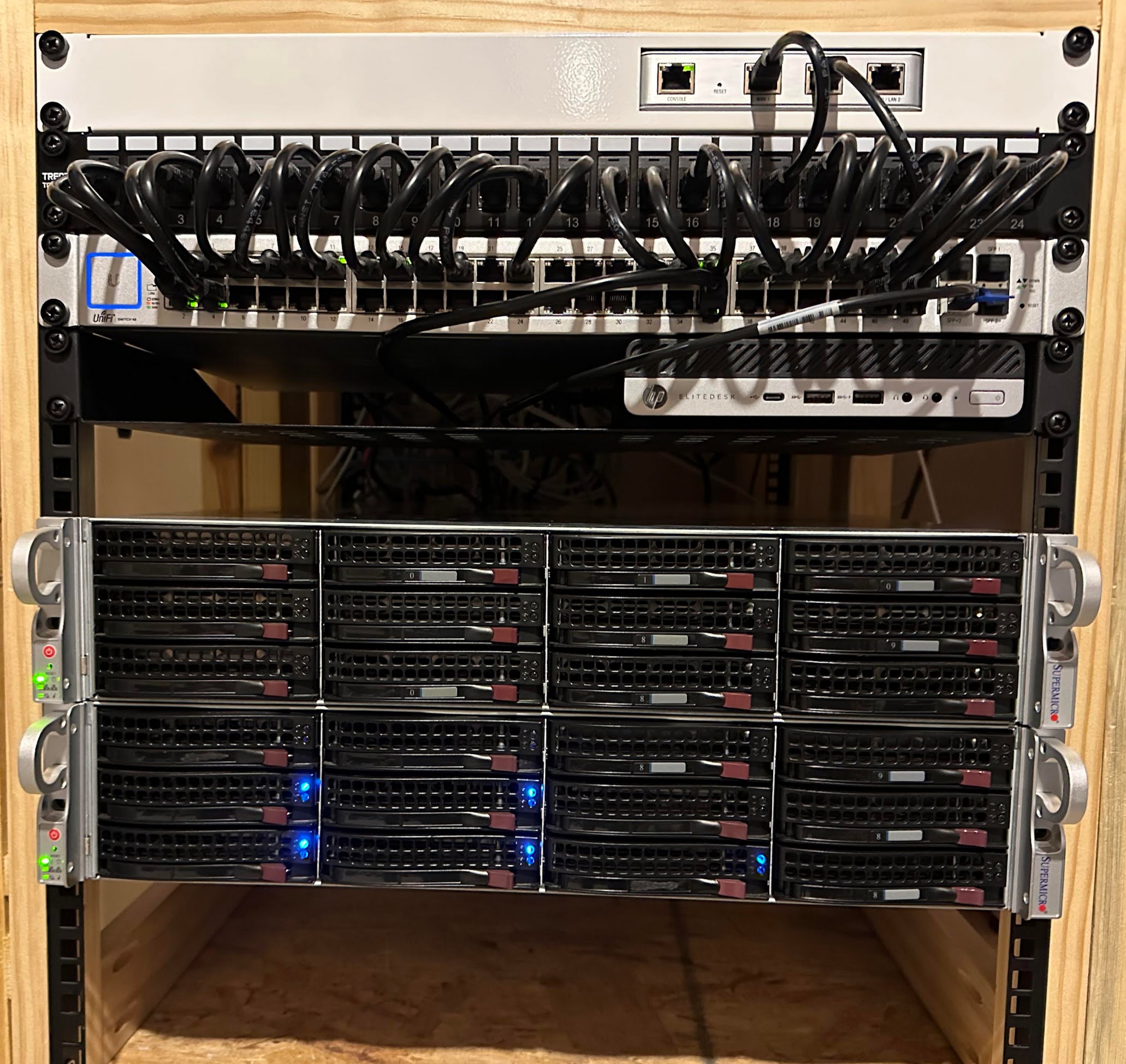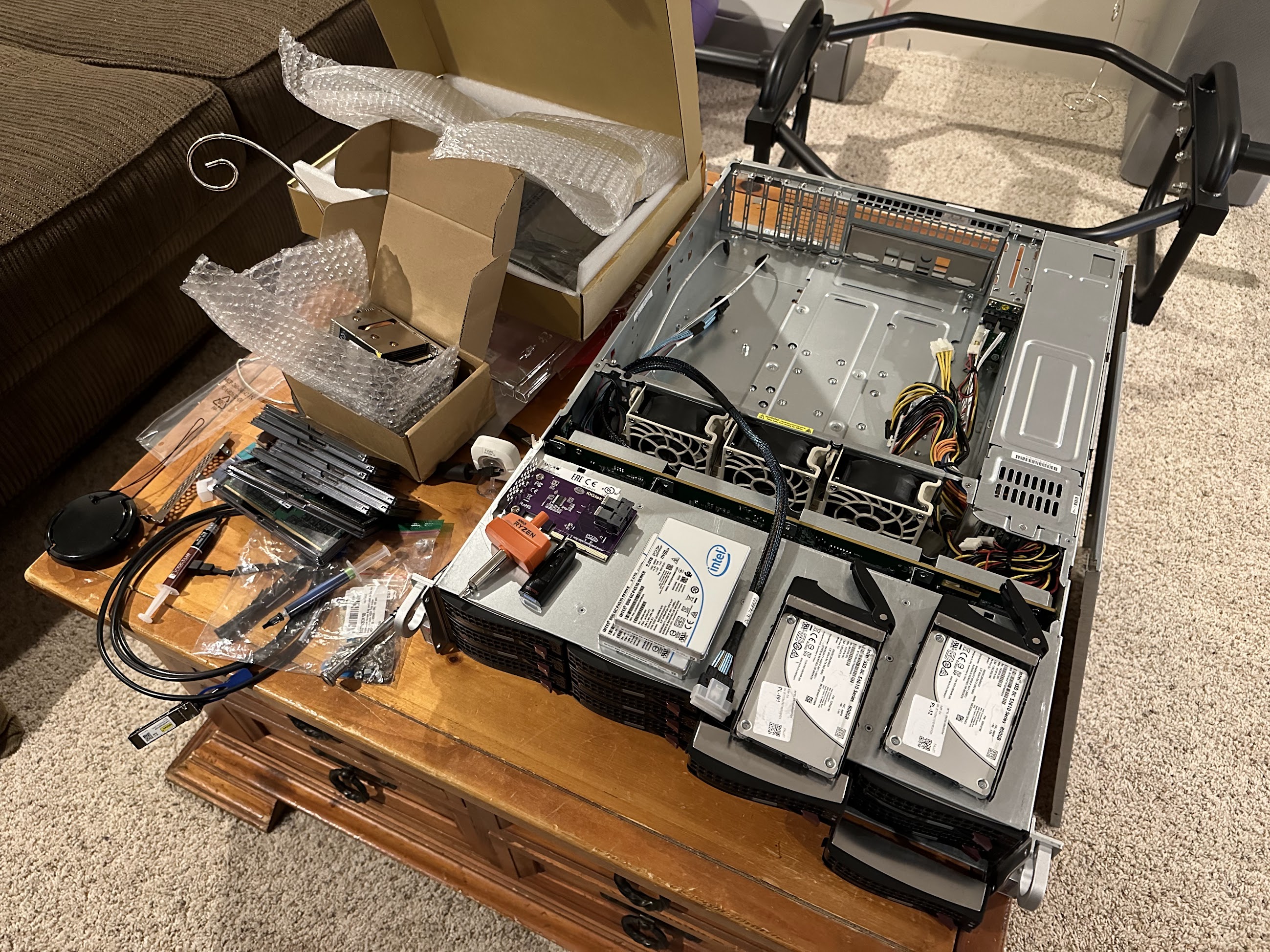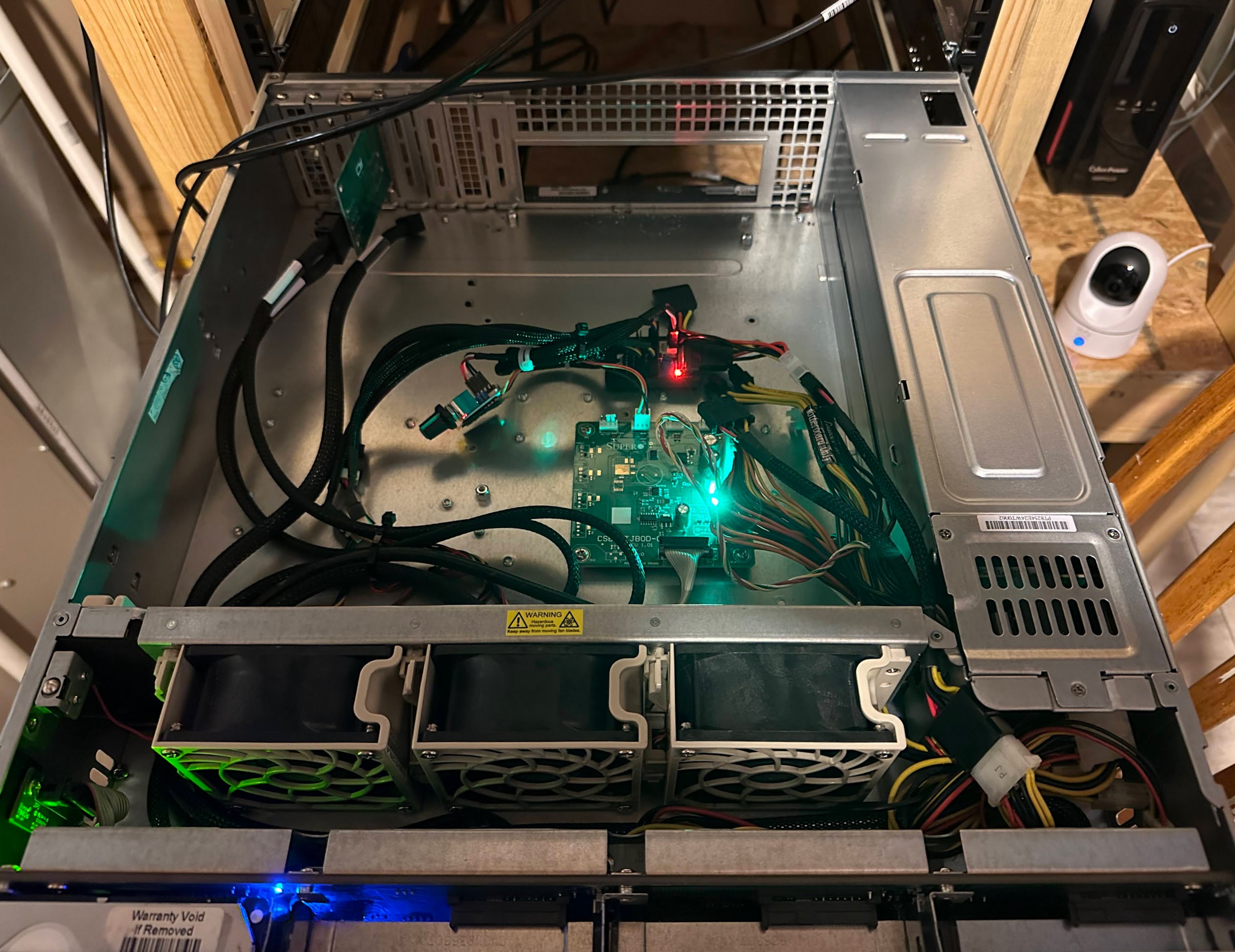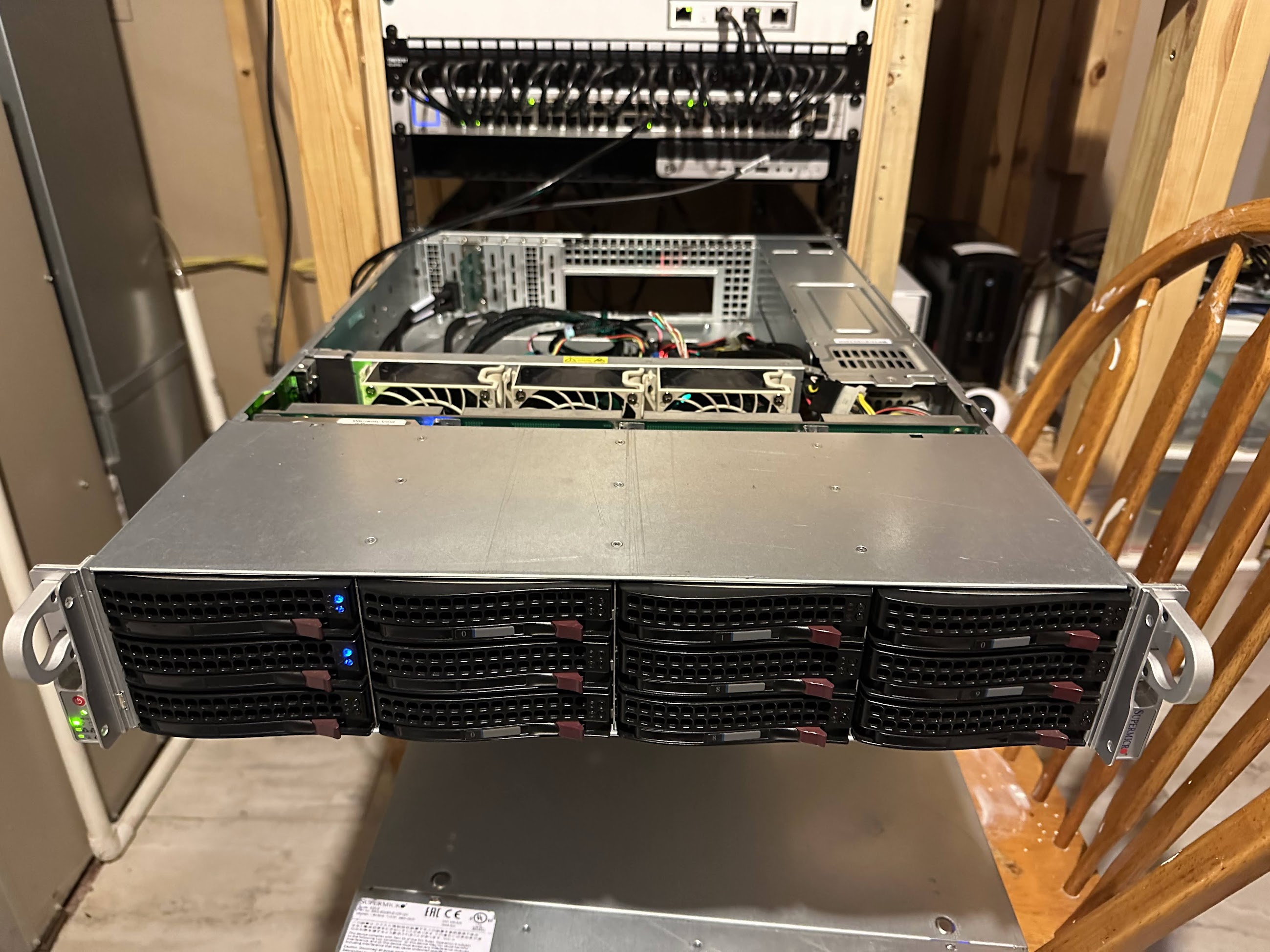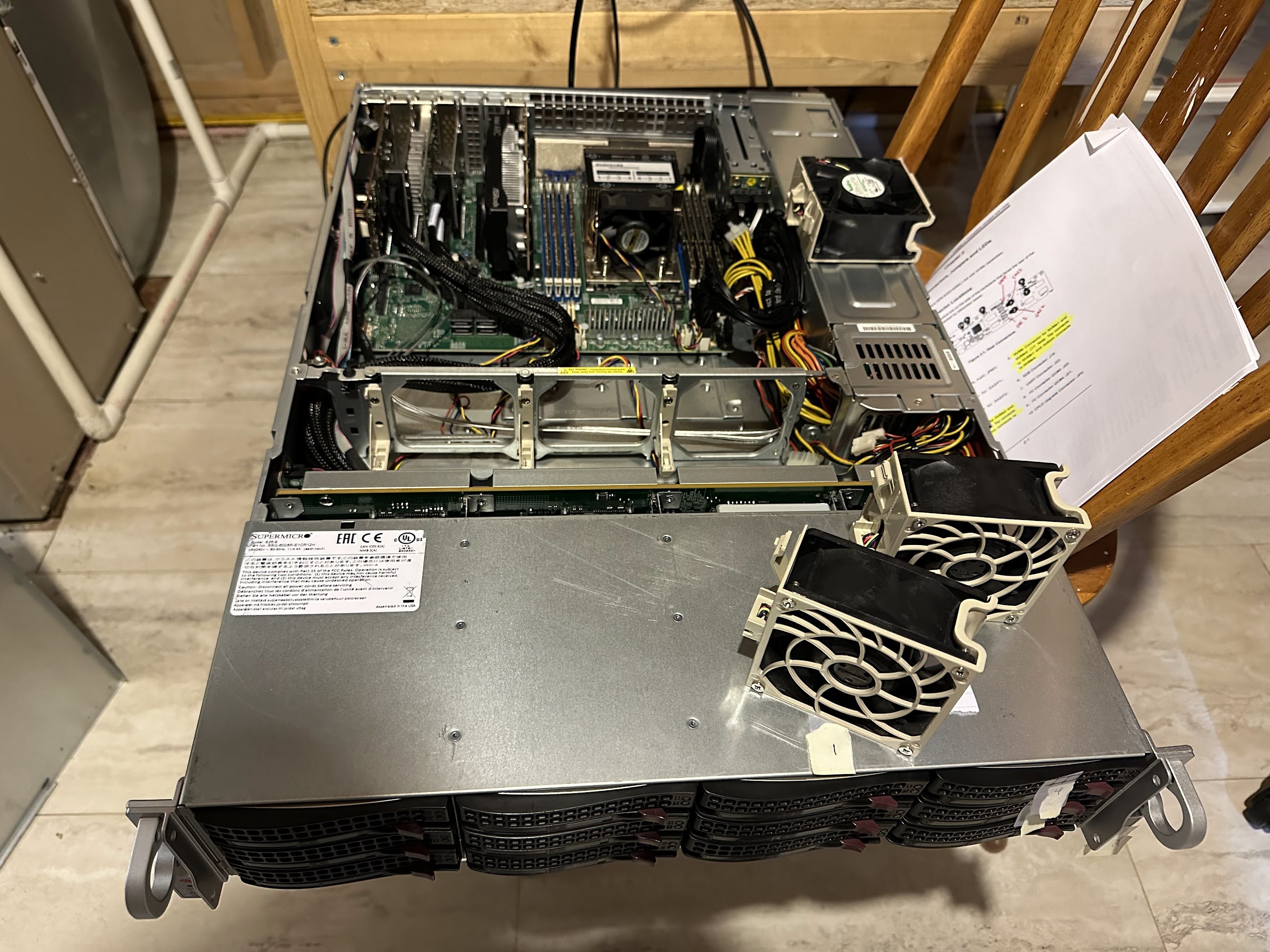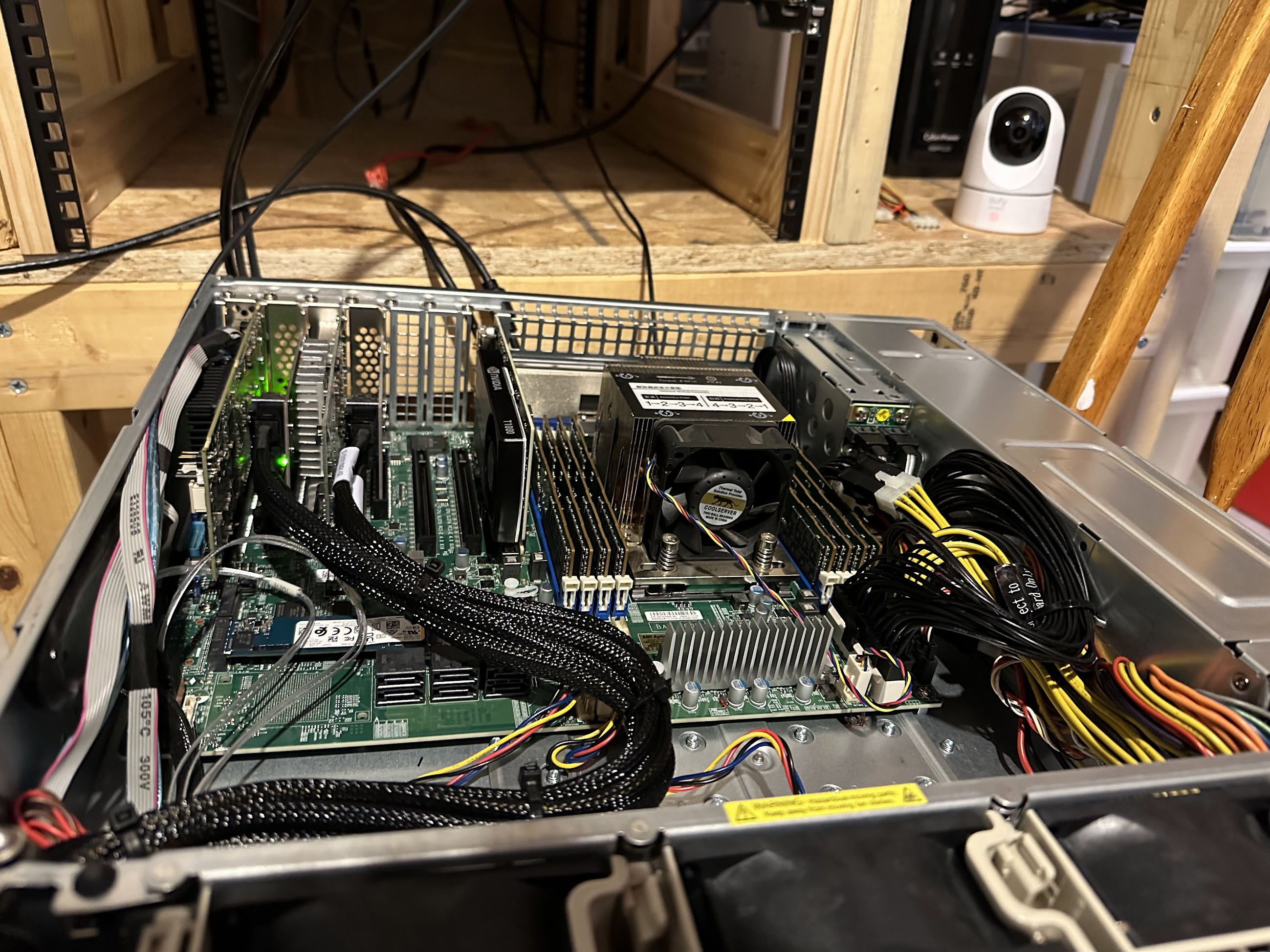Evolving My Home Server: A Journey Through Hardware and Software
Introduction
Following the spirit of my previous article years ago on my home server upgrade, I recently gave my home server a significant performance and functionality overhaul. This machine has gone through numerous hardware iterations, reflecting both my evolving needs and the advances in technology.
Hardware Evolution
The heart of my current setup is an AMD EPYC 7402P CPU paired with a Supermicro H12SSL-i motherboard, a robust combination that supports the extensive tasks demanded by a modern home server. Memory is no slouch either, with (8) sticks of 16GB DDR4 ECC REG RAM. The storage configuration is equally impressive: four Intel P4510 2TB PCIe NVMe SSDs in a ZFS RAID10 setup for blazing-fast data access and reliable redundancy.
Specialized Hardware Components
Boot Drives: The system boots from two 800GB Intel DC S3610 SSDs, ensuring quick startups and robust performance. Mass Storage: For bulk storage, I’ve assembled 16 drives totaling 174TB useable, a mix of Seagate EXOS and HGST drives, managed with SnapRAID and mergerfs for optimal data protection and flexibility.
Case(s): The machine runs inside two Supermicro 826 cases (one with the 826BE1C4 backplane to support the 4 Intel NVME drives). The JBOD case uses a Supermicro CSE-PTJBOD-CB2 controller board for JBOD chassis along with a fan controller to scale the decibels back on the 3 PWM fans in the case.
Graphics and Connectivity: An NVIDIA 3060 GPU handles GPU encoding (I tried an Intel Arc A380, but the lack of BAR support on AMD Eypc made this not work as well as I’d hoped. Edit: this board now supports resizeable BAR, and the ARC GPU does work, but I’m sticking with the 3060 for now. ) for media applications like Plex, while dual HBAs (LSI 9300-8i and 9300-8e) ensure expansive connectivity and data throughput. The network is handled with an Intel X540-T2.
Software Management
My server runs Proxmox, enabling a mix of LXC containers and VMs to coexist seamlessly. This setup allows for efficient resource management and isolation, which is crucial for hosting a variety of services from DNS to Docker containers.
Key Applications
Media and Backup: The server hosts files via SnapRAID and mergerfs, supports media streaming through Plex, and manages backups with a mix of ZFS Snapshots, SnapRAID, cv4pve-autosnap, Kopia, and Backblaze B2.
Network Management: Applications like Unifi for network device management run in isolated Docker containers, ensuring stability and security.
Conclusion
This latest upgrade has transformed my home server into a powerhouse capable of handling virtually any task I throw at it, from intensive data processing to serving as a media hub. It’s a testament to how far home server technology has come and a peek into where it’s headed.
